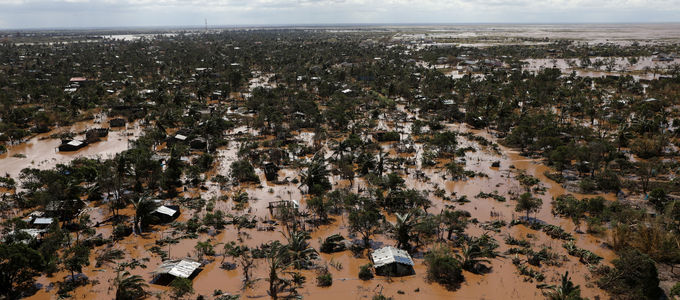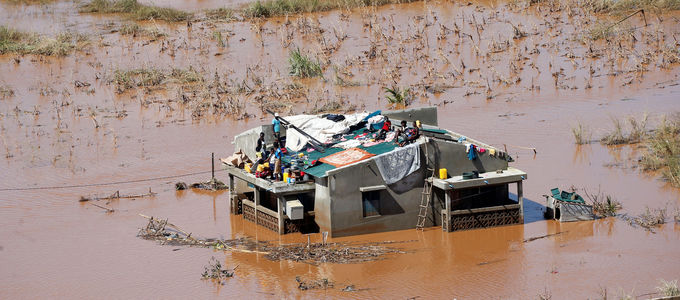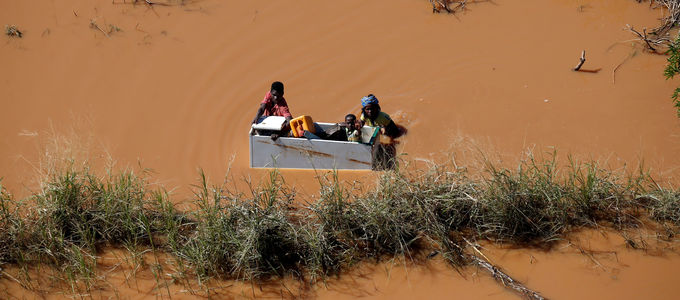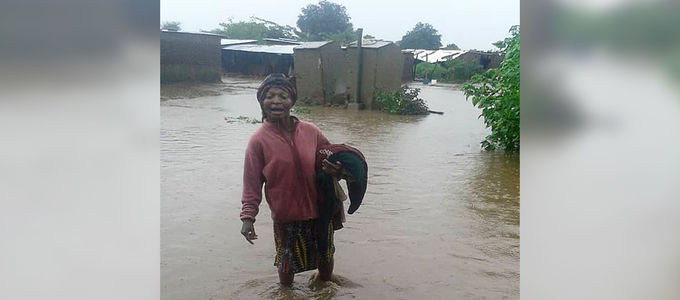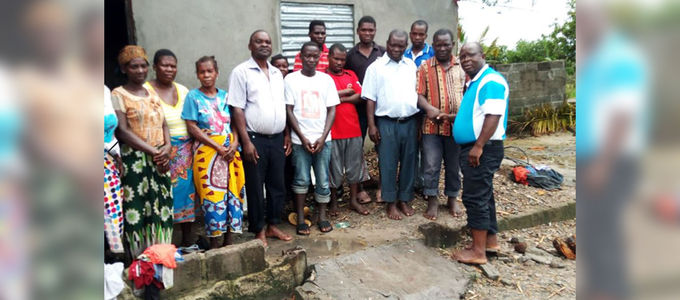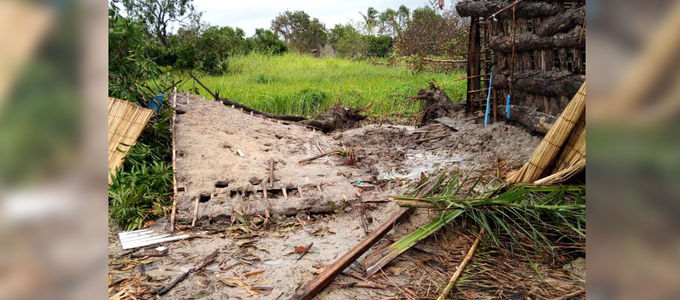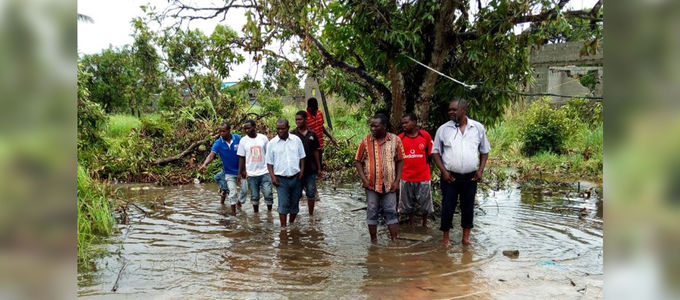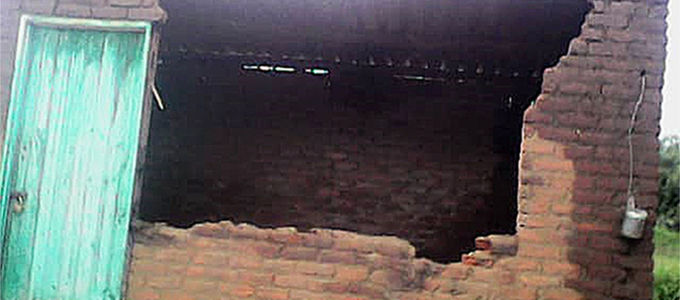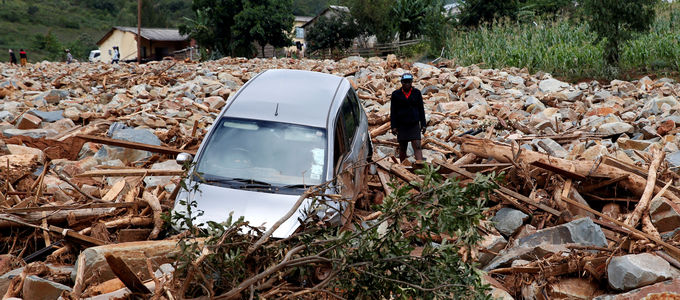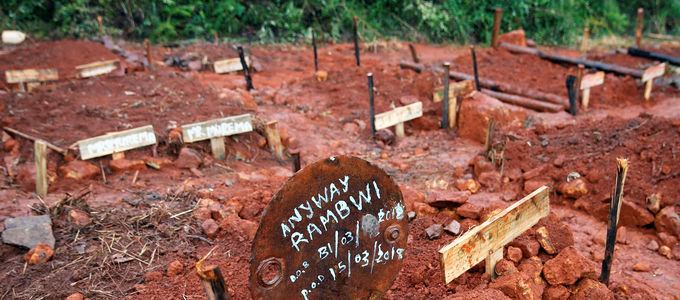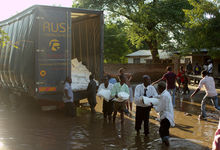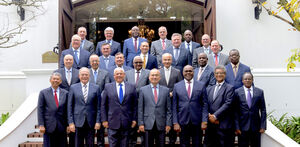“Far from normal“: South-East Africa after Cyclone Idai
First Malawi, then Mozambique, and finally Zimbabwe: Cyclone Idai left a trail of destruction in its wake. Aid organisations of the New Apostolic Church have joined the ranks of organisations providing disaster relief.
It all began on 14 March, a Thursday, Priest Fred Mbunda from Beira reports, the coastal town where the cyclone made landfall. Around nine o’clock in the evening the first roofs were blown off by squalls. This was followed by hours of quiet. “We thought it was gone, but it came back at 2 a.m., with very devastating results.”
Hundreds of thousands affected
The cyclone tore across the country at up to 200 kilometres an hour. The storm brought heavy winds and rain—in part days before and after. What the tropical cyclone left standing was carried away by flash floods. Entire regions are flooded.
The storm claimed at least 650 lives, UN OCHA, the United Nations Office for the Coordination of Humanitarian Affairs says. More than 100,000 people have found shelter in emergency shelters. Every day more people who have been driven from their homes are coming to the shelters. According to estimates, about one million people have lost their homes, their livestock, or fields.
The situation remains critical
A good ten days later, the scale of the disaster is only slowly beginning to emerge. “The situation is still very bad,” Priest Mbunda reports. “Since 14 March we do not have clean water, no electricity, no telephone, no medicine in the hospitals, and no food. The road network has also collapsed.”
UN OCHA estimates the death toll to rise as soon as the water recedes. There is also a big risk of epidemics among the survivors on account of the lack of clean drinking water.
Affected congregations
Shocked, saddened, and sorrowful, is how District Apostle Charles S. Ndandula of Zambia reacted. He is active in two of the countries affected by the cyclone. He is concentrating his efforts on helping the congregation in the Tongogara Refugee Camp in Zimbabwe, but also on the neighbouring congregations of Mutovothi, Maronga, Chibuwe, Gumira, Chitimani, and Chakowa.
Far more brothers and sisters are affected in Malawi. District Apostle Helper Arnold Mhango does not list congregations, but entire elder districts which are affected: Nchalo, Chikwawa, Khisimisi, Ngabu, and Nsanje. Emergency relief measures are underway in both District Churches: especially the collection of blankets, food, and clothing. But this is only a beginning.
Pooling resources and helping together
In the meantime, large and small organisations are busy providing disaster relief, including New Apostolic aid organisations. In a first step, NAK-karitativ is distributing food parcels and hygiene kits to 15,000 households in Malawi and Zimbabwe. There are also plans to help families with basic equipment to erect an emergency dwelling and to supply local clinics with emergency medicine.
The New Apostolic aid organisations also support each other and work together with other international organisations. In Zimbabwe, for example, NAK-karitativ partners with the New Apostolic Church Relief Organisation (NACRO) from Zambia. In Malawi the partner is called Help e.V. – Hilfe zur Selbsthilfe (Helping people help themselves).
Meanwhile, NAK-karitativ receives funds from human aktiv, the aid organisation of the New Apostolic Church Southern Germany. And NAK-Humanitas from Switzerland has made a contribution of 30,000 Swiss francs to the Red Cross for its work in Malawi.
Priest Mbunda from Beira has a request: “We still need your prayers because the situation is far from normal.”
Article info
Author:
Date:
Keywords:
Andreas Rother
26.03.2019
Malawi,
Mozambique,
Zimbabwe,
Aid agencies


